Carbon capture and storage
Type of resources
Available actions
Topics
Keywords
Contact for the resource
Provided by
Years
Formats
Representation types
Update frequencies
Scale
-
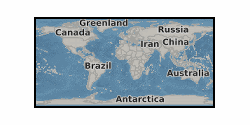
Controlled CO2 release experiments and studies of natural CO2 seeps have been undertaken at sites across the globe for CCS applications. The scientific motivation, experimental design, baseline assessment and CO2 detection and monitoring equipment deployed vary significantly between these study sites, addressing questions including impacts on benthic communities, testing of novel monitoring technologies, quantifying seep formation/style and determining CO2 flux rates. A review and synthesis of these sites studied for CCS will provide valuable information to: i. Enable the design of effective monitoring and survey strategies ii. Identify realistic site-specific environmental and ecosystem impact scenarios iii. Rationalise regulatory definitions with what is scientifically likely or achievable iv. Guide novel future scientific studies at natural or artificial release sites. Two global databases were constructed in Spring 2013, informed by a wide literature review and, where appropriate, contact with the research project leader. i. Artificial CO2 release sites ii. Natural CO2 seeps studied for CCS purposes The location and select information from each of these datasets are intended to be displayed as separate GoogleMap files which can be embedded in the QICS or UKCCSRC web server. These databases are not expected to be complete. Information should be added as more publications or become available or more case studies emerge or are set up. To facilitate this process, a contact email should be included beneath the map to allow viewers to recommend new or overlooked study sites for the dataset. Grant number: UKCCSRC-C1-31. These data are currently restricted.
-
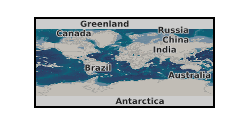
Full proposal cover sheet for scientific drilling (852-CPP) 'GlaciStore: Understanding Late Cenozoic glaciation and basin processes for the development of secure large-scale offshore CO2 storage (North Sea)', submitted to Integrated Ocean Discovery Programme (IODP) April 2014. The full proposal cover sheet document is publicly available from IODP; the submitted full proposal document is restricted to the proponents for publication and for review and response from IODP. The lead submitter, on behalf to the GlaciStore consortium is Heather Stewart, British Geological Survey (BGS).The 30 proponents are from research and industry organisations in the UK, Norway and USA (BGS, Institute for Energy Technology, Lundin Norway AS, SINTEF Energy Research, Statoil ASA, University of Bergen, University of Edinburgh, University of Oslo and University of Texas at Austin). The full proposal cover sheet states the names of proponents of the ‘GlaciStore’ consortium and contact details for the lead submitter of the bid. The full proposal cover sheet comprises: an abstract of the submitted full proposal including description of project funding support as a Complementary Project Proposal: describes and states the scientific research objectives; summarises proposed non-standard measurements; tabulates details of the 13 proposed drill sites (revised from pre-proposal stage) to address the scientific objectives. The objectives are to investigate: glacial history and sedimentary architecture; fluid flow and microbial processes in shallow sediments; and the stress history and geomechanical models for strata that have experienced multiple glacial and interglacial cycles. The table of proposed drilling sites includes the co-ordinates of the position and water depth at each proposed site, the objective for drilling and sampling and the depth to achieve the objective. The proponents, their affiliation, expertise and role for the submission are listed. UKCCSRC Grant UKCCSRC-C1-30.
-
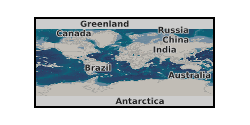
UKCCSRC Flexible Funding 2020. Experimental data are the acoustic emission (AE) signals collected with three AE sensors when CO2 leak from a CO2 storage cylinder under different pressures. '5MPa_20kgh-1' means the data was collected when the pressure was 5MPa and the leakage rate was 20 kg/h. The sampling frequency of AE signals is 3MHz. UKCCSRC Flexible Funding 2020: Monitoring of CO2 flow under CCS conditions through multi-modal sensing and machine learning.
-
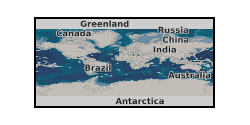
UKCCSRC Flexible Funding 2020. The experimental data was collected on a 1-inch bore gas-liquid two-phase CO2 flow rig in real time. The first column of the table is the time stamp. The second to 19th columns are the mass flowrates, temperatures, densities and tube frequencies from Coriolis flowmeters installed on the gas phase section, liquid phase section, horizontal test section and vertical test section, respectively. The last column of the datafile is the reading from the differential pressure (DP) transducer installed across the Coriolis flowmeter on the horizontal test section. UKCCSRC Flexible Funding 2020: Monitoring of CO2 flow under CCS conditions through multi-modal sensing and machine learning.
-
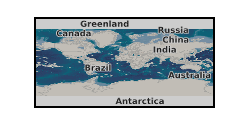
Revised full proposal cover sheet for scientific drilling (852-CPP2) 'GlaciStore: Understanding Pleistocene glaciation and basin processes and their impact on fluid migration pathways (North Sea)', submitted to Integrated Ocean Discovery Programme (IODP) April 2016. The full proposal cover sheet document is publicly available from IODP; the submitted full proposal document is restricted to the proponents for publication and for review and response from IODP. The proposal is a revision of full proposal 852-CPP in response to review by IODP. The lead submitter, on behalf to the GlaciStore consortium is Heather Stewart, British Geological Survey (BGS).The 32 proponents are from research and industry organisations in the UK, Norway, USA and Canada (BGS, Institute for Energy Technology, Lundin Norway AS, Memorial University of Newfoundland, SINTEF Energy Research, Statoil ASA, University of Bergen, University of Edinburgh, University of Oslo and University of Ottawa University of Texas at Austin). The revised full proposal cover sheet states the names of proponents of the 'GlaciStore' consortium and details for the lead submitter of the bid. The full proposal cover sheet comprises: an abstract of the submitted full proposal including description of project funding support as a Complementary Project Proposal: describes and states the scientific research objectives; summarises proposed non-standard measurements; tabulates details of the 13 proposed drill sites (revised from full proposal CPP-852) to address the scientific objectives. The objectives are to investigate: glacial history and sedimentary architecture; fluid flow and microbial processes in shallow sediments; and the stress history and geomechanical models for strata that have experienced multiple glacial and interglacial cycles. The table of revised proposed drilling sites includes designation of primary or alternate sites, the co-ordinates of the position and water depth at each proposed site, the objective for drilling and sampling and the depth to achieve the objective. The proponents, their affiliation, expertise and role for the submission are listed. UKCCSRC Grant UKCCSRC-C1-30.
-
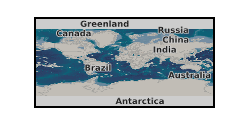
This poster on the UKCCSRC Call 2 project, Novel reductive rejuvenation approaches for degraded amine solutions from PCC in power plants, was presented at the Cardiff Biannual, 10.09.14. Grant number: UKCCSRC-C2-189.
-

This study was carried out jointly by the University of Birmingham and the British Geological Survey. The report addresses the feasibility of using novel quantum-technology-based gravity sensors to monitor underground CO2 storage. Of particular interest is the applicability to upcoming near-surface leak monitoring trials that the British Geological Survey will be conducting at its test site. UKCCSRC Flexible Funding 2021: Feasibility study into Quantum Technology based Gravity Sensing for CCS
-
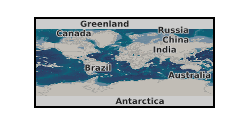
The data is collected in North China Electric Power University (NCEPU) on a 1-inch bore, gas-liquid two-phase, high pressure (up to 72bar), ambient temperature CO2 flow test rig from 19th May to 3rd June 2016. Single phase gas and liquid information are provided by Coriolis meter and mixed together. Then a vertical Coriolis meter is used to measure the two-phase mixture together with a DP transmitter measuring differential pressure across the vertical Coriolis meter under test. UKCCSRC Call 2 project: CO2 Flow Metering through Multi-Modal Sensing and Statistical Data Fusion. Grant number: UKCCSRC-C2-218. Published papers: 1) Mass flow measurement of two-phase carbon dioxide using Coriolis flowmeters (https://doi.org/10.1109/I2MTC.2017.7969891). 2) Mass flow measurement of gas-liquid two-phase CO2 in CCS transportation pipelines using Coriolis flowmeters (https://doi.org/10.1016/j.ijggc.2017.11.021).
-
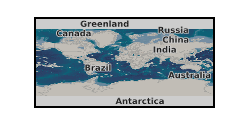
This poster on the UKCCSRC Call 2 project, UK demonstration of Enhanced Calcium looping, and first Global Demonstration of Advanced Doping Techniques, was presented at the Cardiff Biannual, 10.09.14. Grant number: UKCCSRC-C2-209.
-
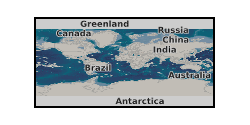
This poster on the UKCCSRC Call 2 project Shelter and Escape in the Event of a Release of CO2 from CCS Infrastructure (S-CAPE) was presented at the UKCCSRC Manchester Biannual Meeting, 13.04.2016. Grant number: UKCCSRC-C2-179.
 NERC Data Catalogue Service
NERC Data Catalogue Service